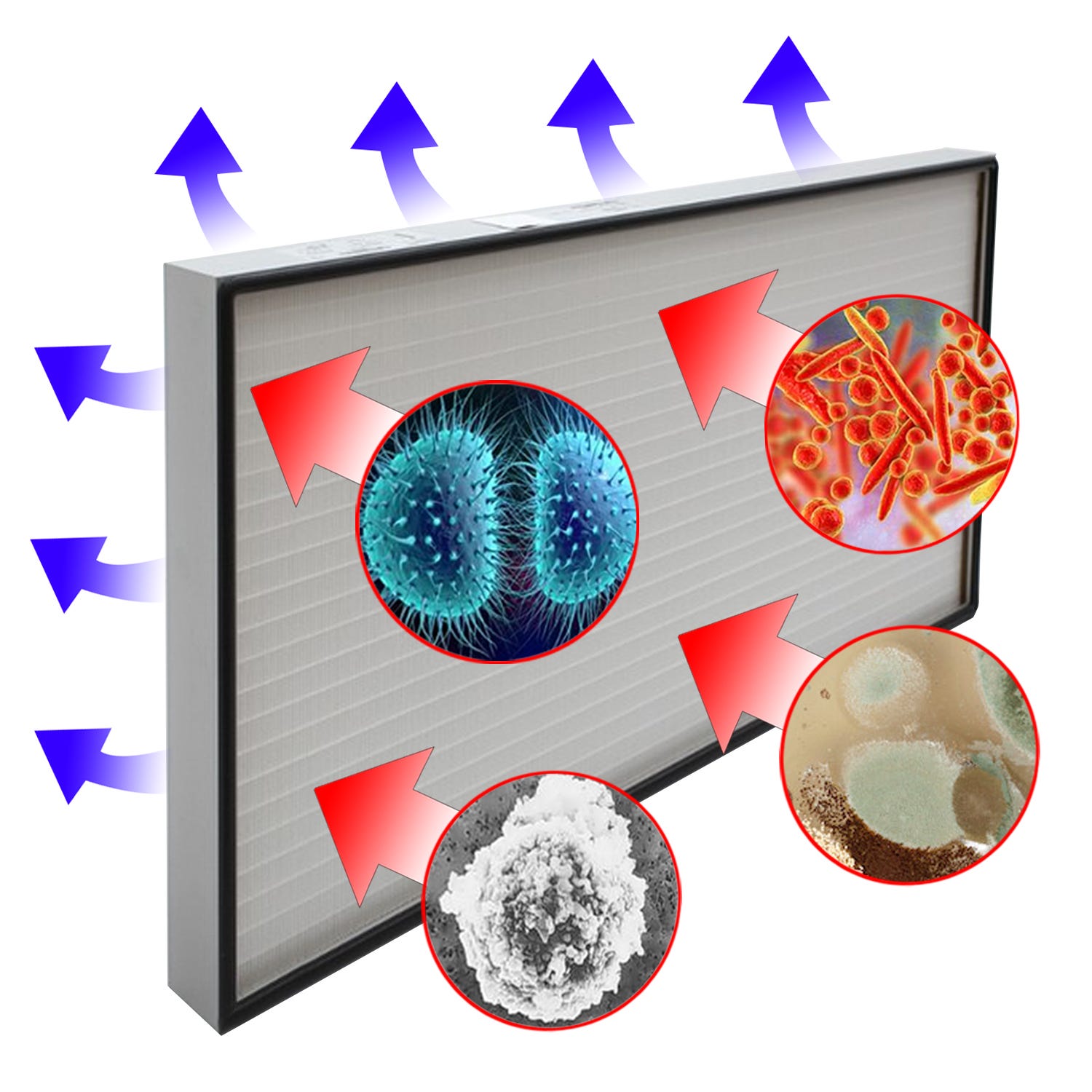
Can't find what you're looking for?Tell us what you need and we'll build it!

 ULus Listed
ULus Listed BioSafe classic logo
BioSafe classic logo ISO 6 Icon
ISO 6 Icon Stocked
Stocked
 Stocked
Stocked
 Stocked
Stocked
 Watch Terra's Video on a HEPA Filtered Laminar Flow Cabinet Smoke Test
Watch Terra's Video on a HEPA Filtered Laminar Flow Cabinet Smoke Test
Most cleanroom professionals understand that HEPA and ULPA filters capture contaminants that degrade particle-sensitive samples. But they also help remove bacteria, mold spores, and many viruses that contribute to a host of infections.
Most common bacteria are contained by the 0.3-micron pore size of high-efficiency particular air (HEPA) filters. Ultra-Low Penetration Air (ULPA) filters, which are rated 99.999% efficient at retaining particles of 0.12 microns and larger in diameter, capture ultra-fine contaminants, including many large viruses and mold spores.
These filters also remove aerosol-born pathogens - germs that hitch a ride on larger particles and liquid droplets that are captured in a HEPA or ULPA filter. HEPA- or ULPA-based Fan/Filter Units (FFUs) thus can play an important role in infection prevention in surgical theaters, ICUs and other medical settings.
Additionally, HEPA filters can help filter pollen, tiny insects, bacteria, mold, and other fungal spores that might be present during plant tissue culture or cannabis production. Contaminants such as these can find a way in via personnel or normal HVAC units and can blight crops and reduce yields. HEPA Filters help increase crop yields, pass inspection/meet regulations, and reduce contamination.
Here is a list of common human pathogens that HEPA/ULPA filters capture and remove from circulation:


Can't find what you're looking for?Tell us what you need and we'll build it!